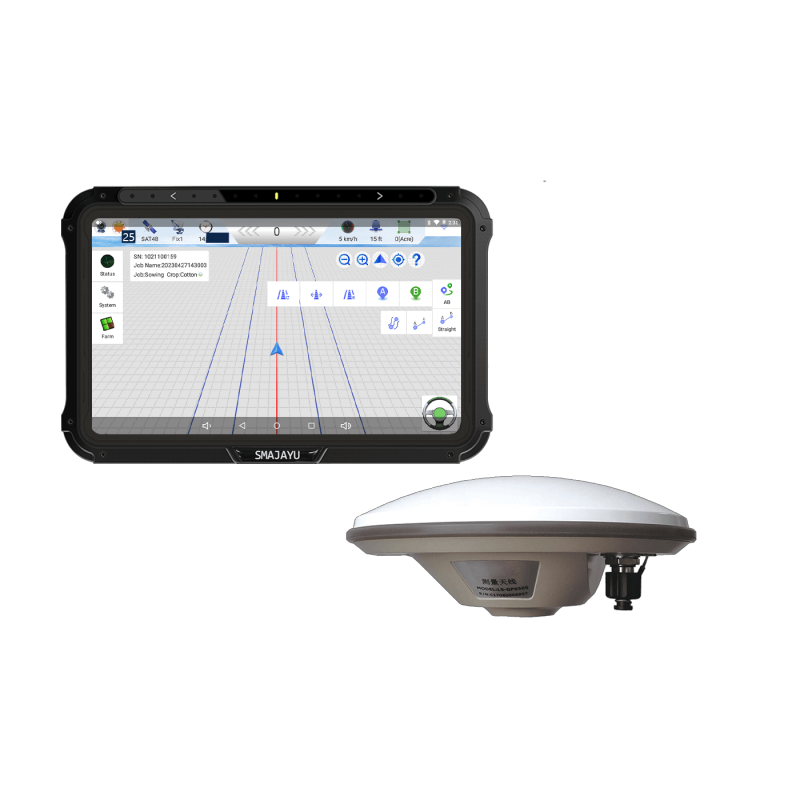What do Agriculture gps systems mean?
The agriculture gps systems technology is referred to as GPS systems. GPS-based navigation technology may find an exact position and time anywhere on Earth. GPS devices are incorporated into a range of agricultural practices to increase production, accuracy, and efficiency in agriculture.
Enhancing Agriculture: Growing Use of GPS in Agriculture
This innovation has significantly impacted various aspects of agriculture, including planting, cultivation, irrigation, and harvesting. GPS (Global Positioning System) technology integration has indeed revolutionized farming practices, leading to what is frequently referred to as "precision agriculture" or "smart farming." Here are some ways that GPS technology has altered the agricultural environment:
- Precision farming:
By using tractors, combines, and sprayers that are GPS-enabled, farmers may maximize the efficiency of their field operations. With such accuracy, overlaps are minimized, resources are used more effectively, and inputs like seeds, fertilizer, and insecticides are used more effectively.
- Site-Specific Crop Management:
Using GPS technology, farmers may split their fields into smaller zones based on many elements, such as the kind of soil, the amount of moisture present, and previous yield information. As a result, they can customize their planting, irrigation, and fertilization tactics to meet the unique requirements of each zone, maximizing yields while lowering costs.
- Automated equipment guidance:
GPS-guided machinery may travel through fields along predetermined courses, assuring precise and constant spacing between rows, lowering the danger of injuring crops, and allowing operations at night or in low-light conditions.
- Application at Variable Rates:
Based on historical data and real-time information, farmers can apply inputs like insecticides and fertilizers at various rates throughout a field. This improves resource usage while lowering expenses and having a smaller negative impact on the environment.
- Monitoring and Mapping of Yields:
Harvesters with GPS technology can precisely record yield data as they move through a field, resulting in yield maps showing crop productivity changes. Farmers may use this data to analyze field performance and make data-driven next-planting and management choices.
- Data integration and analysis:
GPS-generated data may be combined with data from other sources, including remote sensing and Geographic Information Systems (GIS), to give a complete picture of the farm. Farmers may analyze this information to spot patterns, guide choices, and modify their methods as necessary.
- Impact on the Environment:
Precision farming reduces the usage of resources, including water, fertilizers, and pesticides. Farmers may diminish runoff, control water pollution, and have less negative influence on neighbouring ecosystems by using these inputs only where they are needed.

- Optimized Irrigation:
By focusing on certain regions that need water, eliminating over-irrigation, and preserving water resources, GPS data enables farmers to manage irrigation more effectively.
- Labour Savings:
The use of GPS-guided automated systems and machinery frees farmers to concentrate on more strategic activities while potentially lowering labour expenses.
- Remote Field Monitoring and Management:
Using agriculture gps systems, farmers may remotely monitor their fields and get real-time updates on the status of their machinery and fields. This makes it possible to react quickly to developing circumstances and helps to avert potential problems.
What distinguishes SMAJAYU agriculture gps systems from other comparable goods?
We value the farmers' efforts to substantially enhance our supply. Most of the previous twelve years have been devoted to developing precision farming tools that might lower the labour required by all farmers, raise the income they earn from their lands, and broaden their horizons. The Global Positioning System (GPS) is a key tool for implementing precision agricultural techniques. The agriculture gps systems are a necessity for farming equipment. Using GPS systems in tractors for farming may result in better yields, reduced expenses, and less time consumed performance manual labour.
Increasing GPS accuracy through:
The following sentences will examine numerous strategies for improving agricultural GPS antenna accuracy. It is important to recognize the issues that could limit GPS location accuracy before looking at methods to improve location precision. The following are some of the most prevalent reasons for GPS accuracy issues:
- To keep track of where your tractor is going, you should use a GPS agriculture system. It is still possible to achieve 100% field efficiency.
- With this technology, you may apply basic navigational methods, keep track of places, create notes, and travel in the dark.
- Since GPS systems allow farmers to raise their income, the vast majority are glad to use them.
- The least labour-intensive occupation that yields the highest rate of return is farming.
Agricultural GPS systems' effects on farming productivity and environmental sustainability:
Global Positioning System (GPS) systems for agriculture have significantly improved farming productivity and environmental sustainability. These technologies give exact location and data information for agricultural activities using satellite navigation systems, numerous sensors, and software. They have affected farming methods in the following ways:
- Efficiency and Precision Farming:
Farmers may precisely map and track the variability in their fields' soil composition, moisture content, and crop health using agricultural GPS systems. With this knowledge, farmers may target their efforts towards certain fields to maximize resource efficiency and minimize waste. As a result, planting, irrigation, fertilizer, and pesticide treatment become more effective.
- Reduced Input Usage:
Farmers may avoid over-applying inputs like fertilizer, herbicides, and water by employing GPS-guided machinery. By using resources more wisely, this focused application not only lessens the negative effects of toxic pesticides on the environment but also helps farmers save money.
Conclusion:
Transforming Agriculture Practices with the advent of cutting-edge GPS (Global Positioning System) technology in recent years, the agriculture business has seen a significant upheaval. This ground-breaking invention has fundamentally altered how farmers do their daily business, resulting in improved production, efficiency, and sustainability in agricultural methods. SMAJAYU provides thorough and dependable service, basic support services, and online technical assistance to assist you with various problems. It is designed to make it simpler for tractors to keep up with contemporary advancements and performance standards. Our official team members have a regular experience of more than ten years.


